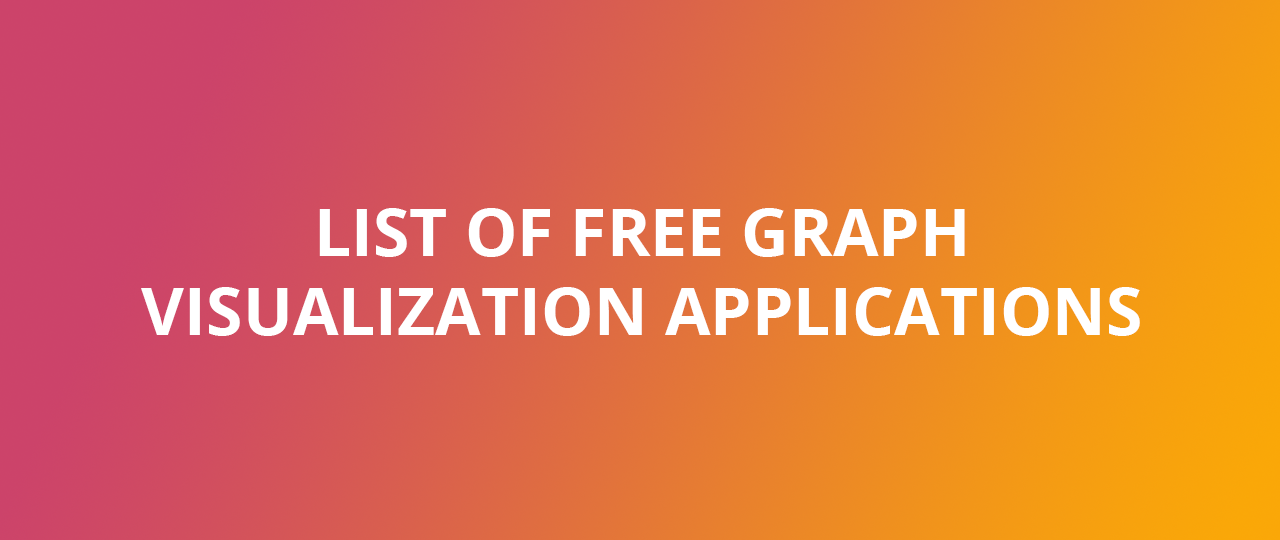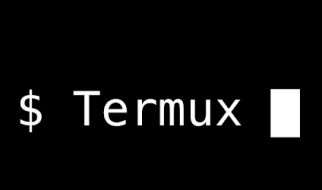? Following the GraphTech series, where I discussed the graph database, graph analytics, and graph visualization ecosystems, I put together a list of free graph visualization applications: Some of the tools are totally free, some other have freely accessible community editions. These tools should require little to no development skills. The complexity of the tools varies, some are designed for research purpose, others are accessible to most publics.
? For a list of graph visualization libraries, check out my other medium post.

- Arcade Analytics Community Edition: an open-source graph visualization platform that can connect to graph or relational databases. You deploy it using Docker.
- Beagle: incident response and digital forensics tool which transforms security logs and data into graphs. Available as a docker file or as a library.
- Bloodhound: open-source solution for mapping and visualizing the relationships in your Active Directory environment to identify and eliminate potential attack paths.
- CFinder: a free software tool for network cluster (community) detection, based on the Clique Percolation Method (CPM).
- Circos Table Viewer: online web tool based on Circos? software package to visualize tabular data as chord diagrams. You can upload your own files and customize how the data is parsed, filtered and displayed.
- ConnectTheDots: a free online graph visualization application that shows you how your data is connected by analyzing it as a network. You can copy-paste excel data or upload your own CSV file. The tool is developed by a DataBasic.
- Constellation: an open-source data visualization and analysis software developed by the Australian Signals Directorate (ASD). It runs on Windows or Linux desktops.
- Cuttlefish: a network workbench application that provides visualization, interactive manipulation of the layout and graph edition. It is available as a JAR package file.
- Cytoscape: an open-source software platform for visualizing complex networks and integrating these with any type of attribute data. A lot of Apps are available for various kinds of problem domains, including bioinformatics, social network analysis, and the semantic web.
- Cityplanner: an online network visualization application to visualize connections between people, technology, and work product. You can use sample data or import your own tabular data.
- Elasticsearch Graph API + Kibana: the Graph API lets you map and query information about the documents and terms in your Elasticsearch index. It connects to Kibana, the open-source plugin for ES, which provides an interface to visualize the graphs.
- E-net: a Windows software for analyzing ego network data. The program is freeware.
- esyN: an online tool integrated with major databases so you can retrieve data automatically as you construct the network. It lets users embed networks on any website using iframe codes. esyN is developed at the University of Cambridge.
- Gephi: an open-source network analysis and visualization software package written in Java on the NetBeans platform. Gephi is open-source and free.
- Gource: an open-source software to visualize activity from your repositories as a network and share it as a video.
- Grano: an open-source tool for journalists and researchers who want to track networks of political or economic interest. You need to install the package on a server to access the tool.
Want to read this story later? Save it in Journal.
- GraphCommon: a collaborative platform for making, analyzing and publishing data-networks. Users can create their knowledge graph using the visual editor, importing from spreadsheets, or via the API.
- GraphVis: a platform for interactive visual graph mining and relational learning. The tool supports most graph formats (edge lists, mtx, gml, xml, graphml, json, paj, net). You can also pick a dataset from their online network repository.
- GraphViz: an open-source graph visualization software. The Graphviz layout programs take descriptions of graphs in a simple text language, and make diagrams in formats such as images and SVG for web pages; PDF or Postscript for inclusion in other documents; or display in an interactive graph browser.
- Graphileon: a graph-driven dashboard development environment. It uses a graph database to store user-interface components (e.g. Networks, Tables, Forms) in nodes (?vertices?) and triggers in relations (?links? or ?edges?) to define the interactions and data-flows between the UI components. You can download the Graphileon Personal Edition for free.
- Guess: an exploratory data analysis and visualization tool for graphs and networks. GUESS offers a visualization front end that supports the export of static images and dynamic movies.
- Histograph: a graph-based exploration and crowd-based indexation tool for multimedia document collections.
- InfraNodus: an online graph tool to visualizes any text as a network. It shows you the most relevant topics, terms and their relations to one another. InfraNodus is an open-source tool is developed by Nodus Labs. They request a 5? contribution to use the tool.
- KrackPlot: a software for network visualization designed for social network analysts. KrackPlot was updated last in 2006.
- Kumu: an online visualization platform for mapping systems and better understanding relationships. You can import your local spreadsheet or use their Google Sheets integration. It is free for public projects.
- Let?s map your Network: an open-source visualization interface to map and visualize your network components. It requires some development skills to install and a few (free) tools to deploy.
- Lynks: an online network visualization tool, free of charge. Lynks has an interface for users to make their own network visualizations and offers the option to collaborate. Lynks is a project by Leiden University.
- Maltego Community Edition: a Java application for visual link analysis?. Maltego is a commercial solution but offers a Community version for non-commercial use that ships with Kali Linux out-the-box.?
- Mentionmapp: an online app to map and visualize your Twitter network. You must connect with a Twitter account. The free membership lets you explore your data.
- MUX Viz: a framework for network multi-layer analysis and interactive visualization. MuxViz is based on R and GNU Octave, running on Windows, Linux and Mac OS X.
- NanoHistory: NanoHistory is a historical social network platform currently under development that allows users to track historical people, organizations, places, things, and their interaction over time.
- Netlytic: a community-supported text and social network analyzer for social media researchers and educators to study public discourse on social media sites. It is made by researchers for researchers, no programming/API skills required.
- NodeGoat: online creation and visualization tools for scholars to build datasets based on their own data model. NodeGoat offers relational modes of analysis with spatial and chronological forms of contextualization. Hosted accounts are freely available for individual research projects.
- Nuclino: a team collaboration software that offers a graph visualization tool to map teams and documents into a graph. The free plan allows for 50 items on your graph.
- Onodo: an open-source network visualization and analysis tool for non-tech users. It intends to help journalists tell stories that relate to network connections by providing a simple platform to map, visualize, analyze and communicate these kinds of complex data.
- OpenMaprr: an interactive network visualization and exploratory network analysis tool. It lets users explore networks; discover and understand patterns in the structure of networks; see the landscape of communities and find structural leverage points in networked systems.
- OpentheBox: Openthebox is a public accountability initiative. The platform brings together data from Belgian company registers, the Belgian National Bank and information on political mandates. Users can explore the connections through a web interface but can not import their own data.
- OSosME: online visualization tools for social media network analysis. OSoMe is a joint project of the Indiana University Network Science Institute (IUNI) and the Center for Complex Networks and Systems Research (CNetS), aimed to study information diffusion in social media.
- Osprey: Osprey is a software platform for the visualization of complex biological interaction networks. Osprey builds graphical representations from Gene Ontology (GO) annotated interaction data maintained by the BioGRID.
- Pajek: historical Windows program for Social Network Analysis and visualization of large networks. Pajek includes six data structures (e.g. network, permutation, cluster,?) and about 15 algorithms using these structures (e.g. partitions, decompositions, paths, flows?).
- Palladio: online data-driven tools for analyzing historical relationships across time. Palladio is a product of the Networks in History Implementation grant.
- Parasol: a network graph exploration tool. Require basic code to run the package.
- Rhumbl: a free online graph visualization tool. You can import excel files and visualize the data as a network. The free plan allows for one visualization.
- Semoss: a general-purpose data analytics and visualization platform and app engine, started as a visualization and analytics tool for RDF data.
- SOCNETV: a free and open-source cross-platform social network analysis and visualization software.
- SocioViz: a social media analytics platform powered by Social Network Analysis metrics. Users can scrape the social web from Twitter, analyze any topic, term or hashtag, identify key influencers, opinions and contents and export data.
- Textexture: an online tool to visualize any text as a network. The resulting graph can be used to get a quick visual summary of the text, read the most relevant excerpts and find similar texts. Textexture is developed by Nodus Labs.
- Ucinet: a Windows software package for the analysis of social network data. It was developed by Lin Freeman, Martin Everett, and Steve Borgatti. It comes with the NetDraw network visualization tool.
- VirusTotal Graph: an information aggregator: the data presented is the combined output of different antivirus products, file and website characterization tools, website scanning engines and datasets, and user contributions. VirusTotal is a free service but you can not upload your own data.
- Vistorian: an open-source online visualization platform for historians. You can map your CSV data tables to a network and visualize it.
- Visual Investigative Scenarios: a visualization tool for journalists to create visual investigative scenarios that map the people and companies in their stories. It is part of The Investigative Dashboard, a project operated by the Organized Crime and Corruption Reporting Project (OCCRP), a not-for-profit network of award-winning investigative reporting teams.
- VOSviewer: a software tool for constructing and visualizing bibliometric networks. The tool offers text mining functionality that can be used to construct and visualize co-occurrence networks of important terms extracted from a body of scientific literature.
- WebVOWL: a web application to visualize ontologies. You can customize and interact with the elements of the Web Ontology Language (OWL). You can import your own ontology file up to 5 MB.
- webweb: a tool for creating, displaying, and sharing interactive network visualizations on the web. Require knowledge of Python, Networkx, or Matlab to build and launch a visualization in the browser.
- Zeppelin: Apache open-source web-based notebook proposes network visualization for data analysis purposes using Spark, SQL or Python data. There is a Neo4j interpreter.
Please feel free to comment on this post with tools I forgot.
Cheers ??
? Save this story in Journal.
??? Wake up every Sunday morning to the week?s most noteworthy stories in Tech waiting in your inbox. Read the Noteworthy in Tech newsletter.


